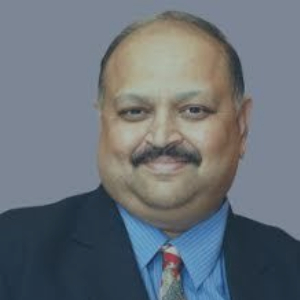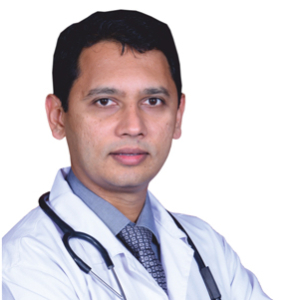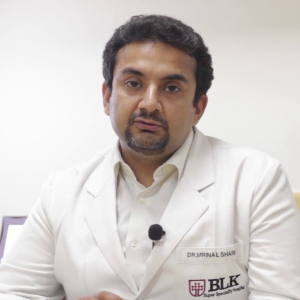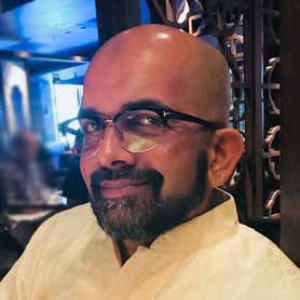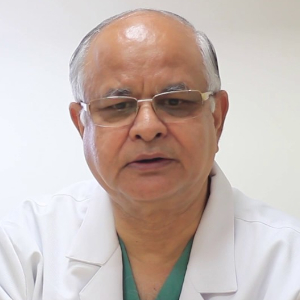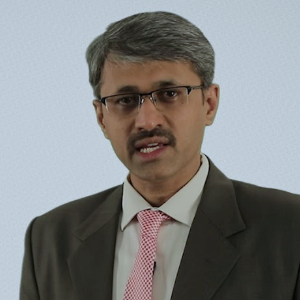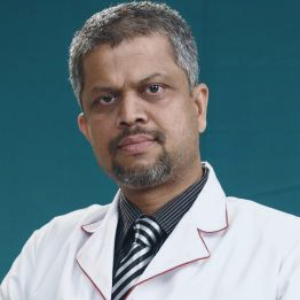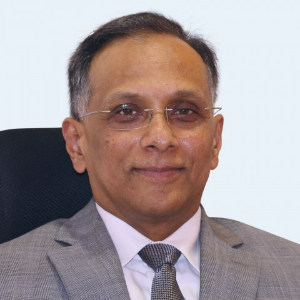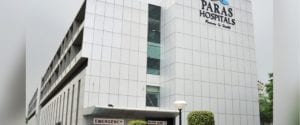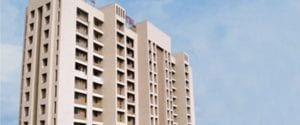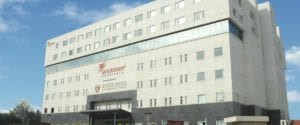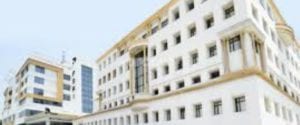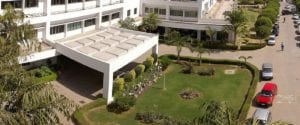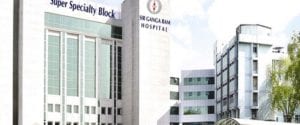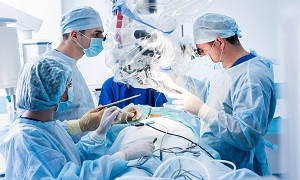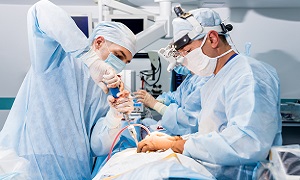Best Spinal Cord Stimulator Implant Doctors in India
- Orthopedic Surgeon & Spine Surgeon, Mumbai, India
- Over 20 years’ experience
Profile Highlights:
- Dr. Gautam Zaveri is one of the best spine surgeons in India today and has performed over 3000 spinal surgeries for the treatment of spinal fractures, trauma, slipped discs, kyphosis, scoliosis, sciatica, spondylolisthesis, and spinal stenosis.
- Dr. Zaveri specializes in Minimally Invasive Spine Surgeries commonly known as MISS and performs most of his procedures using this technique to minimize cuts and speed up the recovery process.
- Neurosurgeon, Chennai, India
- Over 35 years’ experience
Profile Highlights:
- Dr. K Sridhar is a renowned Neurosurgeon who has an experience of 35+ years in brain and spine surgery and has performed over 1000 complex brain tumor surgeries.
- His primary area of interest is skull base surgery, micro neurosurgery, and spine surgery, and is currently working on lesions of the brain stem.
- Neurosurgeon, Bengaluru, India
- Over 22 years’ experience
Profile Highlights:
- Dr. Madhusudan H V is an expert Neurosurgeon in South India with 22+ years of experience in neuro and spine surgery.
- With a specialization in minimally invasive neurosurgeries, Dr. Madhusudan holds the credit for more than 7000 neurosurgeries. He also finds interest in endoscopic interventions and frameless navigations.
- Orthopedic Surgeon, New Delhi, India
- Over 20 years’ experience
Profile Highlights:
- Dr. Mrinal Sharma is a highly renowned Orthopedic Surgeon and Joint Replacement Specialist with a specialization in Arthroplasty.
- Dr. Mrinal Sharma holds with him an experience of more than a decade and has achieved huge success with joint replacement procedures, especially of the knee, during his career.
- He is among the new generation of Orthopedic surgeons who use Computer Navigated techniques for performing knee and hip replacement surgeries.
- Orthopedic Surgeon, Mumbai, India
- Over 20 years’ experience
Profile Highlights:
- Dr. Murali Poduval is a well-known Orthopedic surgeon in Mumbai with a specialization in Joint Replacement surgeries.
- He holds an extensive experience of close to 2 decades in Orthopedics and Joint replacement surgery and is an expert in the management and treatment of deformity correction, arthroplasty, and complex trauma.
- He is highly skilled in performing all types of primary and revision surgeries on the hip, knee, and spine. His primary interest also includes hip arthroplasty for severe defects in children and adolescents.
- Orthopedic Surgeon & Spine Surgeon, New Delhi, India
- Over 40 years’ experience
Profile Highlights:
- Dr. Pradeep Sharma is the Director of the BLK-Max Centre for Orthopedics, Joint Reconstruction, and Spine Surgery in Delhi.
- Dr. Pradeep Sharma has an experience of 40+ years in the field and is an expert in the treatment of both adult and pediatric patients.
- Dr. Pradeep Sharma runs arthroplasty Fellowships supported by Zimmer and Stryker and has trained and mentored young surgeons in Arthroplasty.
- Neurosurgeon & Spine Surgeon, Bengaluru, India
- Over 20 years’ experience
Profile Highlights:
- Dr. Prahraj S S is a leading Neurosurgeon who specializes in all types of neurological surgeries and has performed over 6000 neurosurgeries till date along with complex cranial and spine surgeries.
- He is one of the most renowned neurosurgeons in the country and has provided his services to some of the premier medical institutes in India such as NIMHANS where he performed a large number of spinal surgeries.
- Neurosurgeon & Spine Surgeon, Bengaluru, India
- Over 15 years’ experience
Profile Highlights:
- Dr. Praveen K S is a highly qualified neurosurgeon with over a decade of experience in handling all kinds of neurological diseases and disorders.
- He specializes in Pediatric Neurosurgery, Neuro-Oncology, Endoscopic neurosurgery, Aneurysms, and Neuro- Trauma and has performed over 4000 neurosurgeries in his career.
- Neurosurgeon & Spine Surgeon, Mumbai, India
- Over 20 years’ experience
Profile Highlights:
- Dr. Rahul Modgi is a highly established neuro and spine surgeon in Mumbai specializing in all types of brain and spine surgeries.
- Dr. Rahul Modgi’s name has been recorded in the Limca Book of Records in 2014 when he removed the heaviest iron rod from the brain of a 17-year-old patient. He has also performed various other risky surgeries for which he has greatly appreciated.
- Neurosurgeon, Bengaluru, India
- Over 30 years’ experience
Profile Highlights:
- Dr. Rajakumar V Deshpande is a renowned Neurosurgeon in Bengaluru. He performed the first pedicle screw fixation surgery for a spine injury in Bangalore.
- Dr. D V Rajakumar specializes in endoscopic neurosurgeries and has performed some of the most complex brain and spine surgeries through the endoscopic approach. His other areas of interest include minimally invasive neuro surgeries, management of cerebrovascular diseases, and brain tumor surgeries.
Best Spinal Cord Stimulator Implant Hospitals in India
Paras Hospital, Gurugram
- City: Gurugram, India
Hospital Highlights:
- Paras hospital was established in 2006 and is the 250 bedded flagship hospital of Paras Healthcare.
- The is supported by a team of doctors of international and national repute.
- The hospital is NABH accredited and also the first hospital in the region to have a NABL accredited laboratory.
- The hospital provides specialty medical services in around 55 departments including Neurosciences, Joint Replacement, Mother & Child Care, Minimal Invasive Surgery, Gynecology and Obstetrics, Ophthalmology, Dermatology, Endocrinology, Rheumatology, Cosmetic and Plastic surgery.
- The hospital is equipped with state-of-the-art technologies.
S L Raheja Hospital, Mahim, Mumbai
- City: Mumbai, India
Hospital Highlights:
- SL Raheja hospital is a 140-bed multi-specialty tertiary care hospital that is being managed by Fortis Healthcare Ltd.
- The hospital is a benchmark in healthcare and medical facilities in the neighborhood of Mahim & the western suburbs.
- L.Raheja Hospital, Mahim has one of the most effective ICU and Casualty care services.
- The hospital provides specialty medical services in Cardiology, Oncology, Neurology, Orthopedics, Mother & Child Care, and in Diabetes.
Wockhardt Hospitals, Mumbai
- City: Mumbai, India
Hospital Highlights:
- Wockhardt Hospitals were established in the year 1973, originally called First Hospitals and Heart Institute.
- Wockhardt Hospitals are super specialty health care networks in India, nurtured by Wockhardt Ltd, India’s 5th largest Pharmaceutical and Healthcare company.
- Wockhardt Hospitals is associated with Partners Harvard Medical International, an international arm of Harvard Medical School, USA.
- Wockhardt Heart Hospital performed India’s first endoscopic heart surgery.
- The hospital has a state-of-the-art infrastructure equipped with the latest technologies and modern equipment.
- It has special Centers of Excellence dedicated to the major specialties to provide hassle-free and high-quality clinical care.
Pushpawati Singhania Hospital & Research Institute, New Delhi
- City: New Delhi, India
Hospital Highlights:
- Established in 1996, Pushpawati Singhania Research Institute is one of the top hospitals in the NCR region, as well as one of the top facilities in India for gastroenterology. The hospital is one of South Asia’s first institutes in medical and surgical treatment for diseases related to digestion.
- The hospital is equipped with state-of-the art facilities coupled with the latest equipment as well as renowned consultants from various parts of India as well as other parts of the world.
Indian Spinal Injuries Center, New Delhi, India
- City: New Delhi, India
Hospital Highlights:
- The Indian Spinal Injuries Center (ISIC), provides state-of-the-art facilities for the management of all types of spinal ailments.
- Staffed with internationally trained, acclaimed, and dedicated spine surgeons, the hospital provides cutting-edge medical & surgical technology. The hospital provides comprehensive management of spinal injury, back pain, spinal deformities, tumors, osteoporosis, etc.
- The hospital performs motion-preserving spine surgeries including disc replacement and dynamic fixation, and minimally invasive spine surgeries such as endoscopic disc excision.
- The orthopedic service of the hospital covers all orthopedic ailments including trauma, joint diseases & replacements, oncology, pediatric orthopedics & upper limb ailment.
W Pratiksha Hospital, Gurgaon
- City: Gurugram, India
Hospital Highlights:
- W Pratiksha Hospital, Gurugram, is one of the best hospitals in the NCR region. It is also a top hospital in India for IVF. Since its inception, the hospital has performed over 5500 successful IVFs. The hospital also specializes in gynecology.
- With over 20 years of experience in providing quality healthcare, the hospital is known as one of the most trusted and valued health providers in India.
- Equipped with world-class medical facilities and advanced technology, the hospital’s doctors and clinicians also have a track record of delivering excellent results. The hospital is also known for focusing on preventive well-being as much as on curative treatment.
- The hospital has earned the trust of its patients, by providing the best available treatments at affordable costs.
Narayana Superspeciality Hospital, Gurugram
- City: Gurugram, India
Hospital Highlights:
- Situated near DLF Cyber City, Gurugram, Narayana Superspecialty Hospital is one of the top medical facilities in the Delhi NCR region, catering to the needs of the people. Known for its commitment to quality medical care and patient service, the hospital is a state-of-the-art facility with planned and well-equipped sections, which includes a spacious OPD area as well as comfortable patient rooms.
- It is the closest super-specialty hospital from Indira Gandhi International Airport towards Gurugram, and also the nearest super specialty hospital from DLF Cyber City. It is also close to major residential areas in Gurugram.
- It is part of the renowned Narayana Health Group. Established in 2000, by Dr. Devi Shetty, a renowned cardiac surgeon, it has grown to be one fo India’s leading healthcare groups.
Sir Ganga Ram Hospital, New Delhi
- City: New Delhi, India
Hospital Highlights:
- Sir Ganga Ram Hospital, New Delhi is known to provide the latest medical procedures with the latest technology in all of its units.
- The hospital has a team of reputed doctors, nurses, and healthcare professionals that ensure that patients receive quality care at affordable costs.
- Staffed with a team of highly qualified doctors, dedicated nurses, and paramedical and non-medical staff, the hospital aims to lead in healthcare delivery, medical education, training, and research.
- As per the vision of the founder, the hospital also provides free treatment to the economically weaker sections of society.
- Sir Ganga Ram Hospital also provides training to young doctors under the Diplomate in National Board(DNB) program. The DNB program at the hospital was started in 1984 and it is known for currently running the maximum number of DNB specialties in the country. It also has the distinction of having the first bone bank in India.
KIMS Hospital, Hyderabad
- City: Hyderabad, India
Hospital Highlights:
- KIMS Hospital (a brand name of Krishna Institute of Medical Sciences) is one of the largest and best multi-speciality hospitals in Hyderabad. The hospital provides various treatments to an enormous number of patients.
- The hospital has a capacity of more than 3000 beds. KIMS Hospitals offers different healthcare services in more than 25 specialities and super specialities.
- The hospital is equipped with modern medical equipment and technology. It has robotic equipment to provide minimal invasive techniques for patients.
- The hospital is aimed at providing world-class healthcare facilities and services at an affordable cost for patients.
- The various specialities and departments of the hospital include neurosciences, gastroenterology & hepatology, robotic science, reproductive sciences, dental science, oncological sciences, organ transplantation, heart and lung transplantation and mother and child care.
Fortis Hospital, Shalimar Bagh
- City: New Delhi, India
Hospital Highlights:
- Fortis Hospital in Shalimar Bagh is a multi-super specialty hospital that strives to provide world-class patient care by leaving no stone unturned.
- Fortis, Shalimar Bagh, with 262 beds and a 7.34-acre footprint, provides the best level of medical care through its team of doctors, nurses, technicians, and management professionals.
Spinal Cord Stimulator
Spinal cord stimulator is an implanted device that can deliver low levels of electric signals directly into the spinal cord, which helps to relieve pain. Spinal cord stimulation is often used after nonsurgical pain treatment options fail to provide sufficient relief. Spinal cord stimulators require two procedures for testing as well as implanting the device, the trial and the implantation. It can help one to improve their overall quality of life and it also reduces the need to use any kind of pain medicines. It is typically used with other pain management treatments.
Purpose
Spinal cord stimulation is used if nonsurgical pain treatment options fail to provide enough relief. Spinal cord stimulators are used for treating or managing various types of chronic pain, which includes:
- Back pain, that continues even after surgery (failed back surgery syndrome)
- Post-surgical pain
- Heart pain (angina) untreatable by other means
- Arachnoiditis (painful inflammation of the arachnoid)
- Injuries to the spinal cord
- Peripheral vascular disease
- Nerve-related pain (which can include severe diabetic neuropathy and cancer-related neuropathy from radiation, surgery or chemotherapy)
- Complex regional pain syndrome
- Pain after an amputation
- Visceral abdominal pain and perineal pain
Spinal cord stimulation can help you improve your overall quality of life and sleep as well as reduce the need for pain medicines. It can be used along with other kinds of pain management treatments, which include medications, physical therapy, exercise and relaxation methods.
Spinal Cord Stimulator Types
Spinal cord stimulators can be of various types:
Conventional implantable pulse generator (IPG), a spinal cord stimulator which is operated by battery. During the operation, the batter is placed in the spine. When it runs out, the battery needs to be replaced with a different surgery. This device is usually a good choice for people who are experiencing pain in just one body part due to its lower electrical output.
Rechargeable IPG functions similarly to the conventional device. Its difference is that the battery can be recharged without the need for another surgery. As the energy source is rechargeable, these stimulators are able to put out more electricity. This option is better for people experiencing pain in the lower back or in one or both legs, as the signal can reach further.
Radiofrequency stimulator uses a battery located outside the body. Due to newer designs and better technology, this stimulator is used quite rarely today. It has rechargeable batteries and is similar to the rechargeable IPGs. It is a better option for people with pain in the lower back and legs due to the device’s power.
Your surgeon will be explaining how to operate the device as well as adjust the intensity of the electrical signal, which all three types of stimulators are able to support. Different stimulator settings are required for different body positions. One setting can work better for sitting and another one for walking.
In order to help you easily access the settings which are used mostly, most devices allow doctors to save two or three preset programs. Some newer devices feature several waveforms for electricity delivery, which includes high frequency, burst as well as high-density stimulation.
Procedure
The procedure for spinal cord stimulation requires two steps to test and implant the device: the trial and the implantation. It is usually performed on an outpatient basis.
Spinal Cord Stimulator Trial
The first step is considered a trial period. In this step, your surgeon will implant a temporary device which will be testing out. You will be guided by a particular kind of X-ray called fluoroscopy. Then your surgeon will carefully insert the electrodes in the epidural space of the spine. The location of your pain affects where these electrodes will be placed along the spine. Your surgeon may ask for your feedback during the procedure to position the electrodes in the most effective way.
This trial procedure usually requires just one incision in your lower back for placing the electrodes. The generator/battery will be outside your body, typically on a belt which you will be wearing around your waist.
For around a week, you will evaluate how well the device can reduce your pain. The trial can be considered a success if you experience at least a 50 percent reduction in your pain level.
However, if it is unsuccessful, the wires can be removed quite easily in the clinic without causing any damage to the spinal cord or nerves. If successful, then surgery will be scheduled to implant the device permanently.
Spinal Cord Stimulator Implantation
Next comes the permanent implantation procedure, where the generator will be placed underneath your skin and the trial electrodes will be replaced with sterile electrodes. Unlike the trial ones, these will need to be anchored by sutures so that their movement can be minimized.
Typically around 1-2 hours can be required for the implantation.
First local anesthesia will be administered, after which your surgeon will make one incision for holding the generator and another one for inserting the permanent electrodes. Fluoroscopy will also be used in order to determine where the electrodes need to be placed.
Once the generator and the electrodes are connected to and running, your surgeon will be closing the incisions.
Your surgeon might provide sedation so that you remain comfortable. He/she might also ask for your feedback during the placement of the electrodes.
Recovery
Once the anesthesia has worn off, most patients are able to leave the same day as their procedure. For several days after your surgery, your incisions can cause some pain. Dressings will be placed over your incision sites and they will remain for about 3 days. The incisions should heal within 15-30 days after the surgery.
Your doctor will next discuss your recovery plan with you and might recommend you lighter activity for around 2 weeks after the surgery.
After your surgeon approves you for any kind of regular activity, you will be able to return to work and drive again.
Risks and complications
Although rare, spinal cord stimulator surgery has few risks and complications. Few patients might experience any of the following:
- Bleeding
- Infection, which can occur in the first 15-60 days
- Device migration (i.e. the electrodes moving from their original location which can make the stimulator unable to block pain as effectively). This might require a follow-up surgery so that the electrodes can be put back in their proper spot.
- Device damage (e.g., sometimes, the stimulator can break due to a fall or intense physical activity).
- Dural puncture- The dura mater surrounds your spinal cord. Spinal cord stimulators are inserted in the epidural space, the area which is just outside your dura mater. If a needle or electrode goes too deep and pierces it, this can lead to cerebrospinal fluid leaking out. These punctures can lead to severe headaches.
- Spinal cord trauma- Although it is rare, spinal cord stimulator insertion can sometimes lead to nerve injury and sometimes even paralysis.
Before going through the operation, it is best to discuss with your doctor regarding the benefits and the risks of the procedure.

